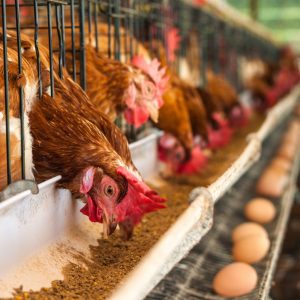Many people would be surprised to learn that chicken drink throughout the day. They must, therefore, have access to water; otherwise, they become dehydrated.
If you are new to poultry farming, you may think giving chicken water to be as easy as pouring some water on a container like you do with a cat or dog. However, like it is with any other livestock handling, it is never that straight forward.
You do not need to learn firsthand, the importance of the proper drinker. Most people inevitably find this fact out when their drinkers become a cleaning liability or when they cause the chicken to injure themselves. The following are drinkers you might consider using:
Trough or bucket
It is alright to use an open container to provide water for chickens. The process is easy enough. However, you must consider the type of container you choose. Often, things like buckets will prove hard to clean.
The trough will need to let the chickens drink so if they are high-sided, the water will be hard to reach as it reduces. Be sure to pick a shallow trough, if you must use one. Note though that chickens are likely to mess this container up.
The most practical size of the bucket is above the back height of the chicken. If you can auto-fill the trough, it will save you a lot of trouble.
Self-contained dispensers

Many backyard poultry farmers love these dispensers. They will need manual filling but can hold between 500 ml and 10 liters of water depending on their size. These dispensers tend to be gravity fed. They have shallow lips at the base to make the container reachable for the hens.
The top part is typically closed so that you can hang it up and prevent the birds from pooping in it or contaminating the water. These dispensers are suitable for a small flock. Note that plastic containers tend to become brittle because of sunlight.
Automatic drinkers
As the name suggests, these drinkers will demand the least maintenance. They come in two broad categories: containers with a water source, and those that you feed from the primary water source.
If yours is a commercial farm, you might want to pick options that connect to the mains source of water. Otherwise, choose the former. Note that the latter will demand installation fees and will have to factor things like pipe damages, leaks, and pressure reducers.
For a flock of 30 birds, a drum container with a lid and a capacity of 20 liters is fine. If a drum as a water source is difficult to get, you can attach the drinker to an outlet. Cup drinkers are a type of auto drinkers.
Be sure to get quality cups; otherwise, it will be a waste of resources. Most cup drinkers have pressure thresholds, so you have to watch the kind of hose you connect them to.
If you have mixed poultry, giving them water can become difficult. You might need to combine systems to allow for all types of birds. Different birds have different sizes and beaks. While at it, also consider the chicks if they share drinkers with hens.

